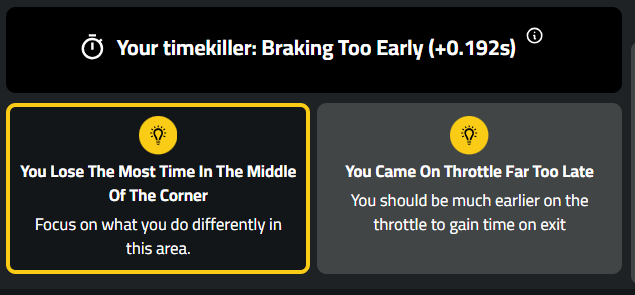Mercedes AMG GT3 EVO Imola Hot Lap Analysis
Let’s take a look at this hot lap of Imola in the Mercedes AMG GT3 EVO driven by HYMO.
The Track
Imola, officially known as the Autodromo Internazionale Enzo e Dino Ferrari, is a storied race circuit in Italy, deeply embedded in the fabric of international motorsport history. Located near the town of Imola, just east of Bologna, the circuit was established in 1953 and has since become synonymous with both high-speed thrills and poignant moments in racing history.
Spanning 4.909 kilometres (3.050 miles), Imola is renowned for its technical and demanding layout, featuring 19 turns that combine fast straights, tight chicanes, and challenging corners. The track is known for its limited overtaking opportunities, demanding high precision and strategy from drivers.
Historically, Imola has been a regular feature in Formula 1, hosting the San Marino Grand Prix for many years. The circuit is also infamous for the tragic events of the 1994 Grand Prix, where both Roland Ratzenberger and Ayrton Senna lost their lives, leading to significant safety reforms in motorsport.
To help you out, the HYMO setup used in this hot lap video is available for you to try HERE.
Analysis
The analysis below uses the Track Titan platform to compare a HYMO reference hotlap in blue to one of the Track Titan community drivers through Segment 6 - named Acqua Minerale. It is clear to see that the community driver misses the apex and goes wide on exit. At first you would think they carry too much speed in but this is not the case. It is all to do with the timing of the braking. The community driver starts to brake at a similar time to the reference (shortly after the first right kink) and they build to full strength as the wheel straightens. This is typical behaviour to brake inversely proportional to the steering. However, this means braking the hardest over the kerb on the left which has low grip.
The technique the HYMO driver uses is to brake the hardest early on, whilst still turning slightly, but on nice grippy tarmac. They then bleed off the brakes as they get onto the left hand kerb such that the car remains stable. The community driver likely lost a lot of grip on the turn-in phase which caused them to go wide, costing them 0.15s on the exit up the hill.
.png)
You can analyse every other turn in the Track Titan platform; see reference lap here.
You can also take it to the next level and compare it against your own driving, just sign up to Track Titan for FREE today here.
Sim Racing Top Tips
Engine fuel mixtures are a vital element in GT3 racing, impacting engine performance, fuel efficiency, and race strategy. There are three primary types:
- Rich Mixtures: Provide more power by using more fuel, ideal for maximum performance scenarios like qualifying, overtaking, or defending positions. The downside is higher fuel consumption.
- Lean Mixtures: Use less fuel, conserving it for longer stints or endurance racing. This comes at the cost of reduced power and slower lap times.
- Standard Mixtures: A balanced approach, offering a compromise between power and fuel economy, typically used during regular race phases.
Modern GT3 cars adjust these mixtures through sophisticated engine control units, allowing drivers or pit crews to optimise performance according to race conditions, track layout, and strategy. These adjustments not only affect engine performance but also influence tyre wear and the overall handling of the car.
Don't know where to improve? Use the HYMO hotlap to find out.
To see full lap analysis of your own driving, you can sign up to Track Titan for FREE today here.


.png)























